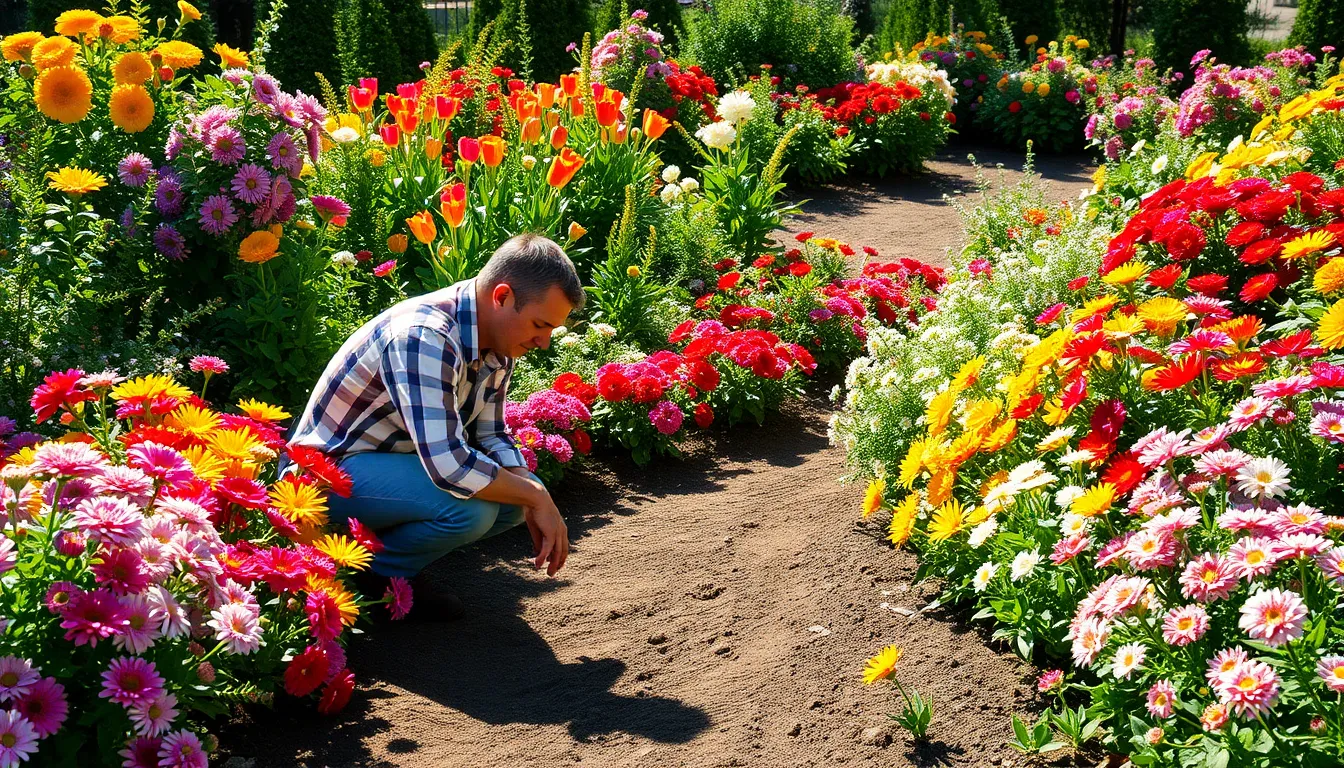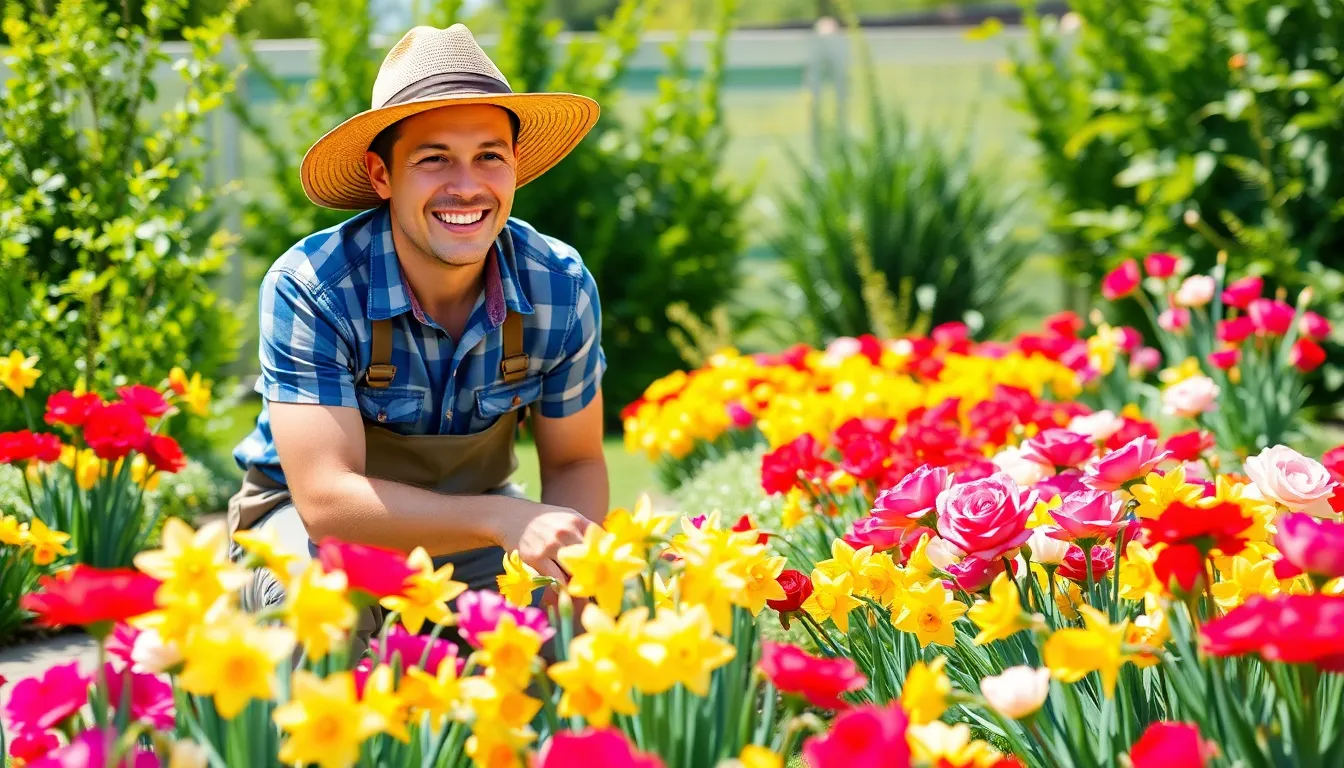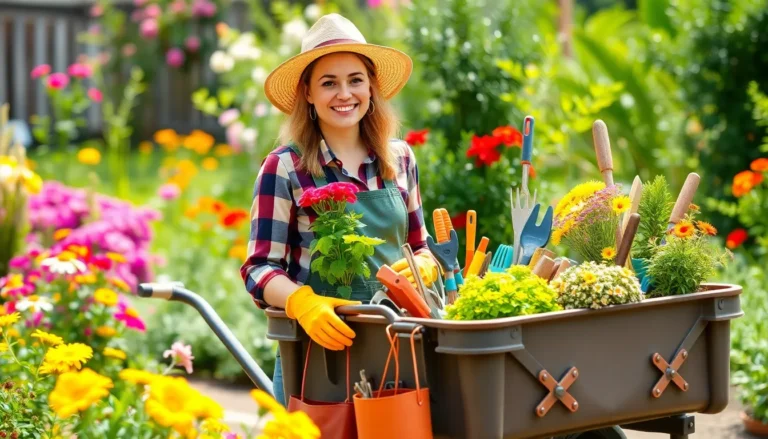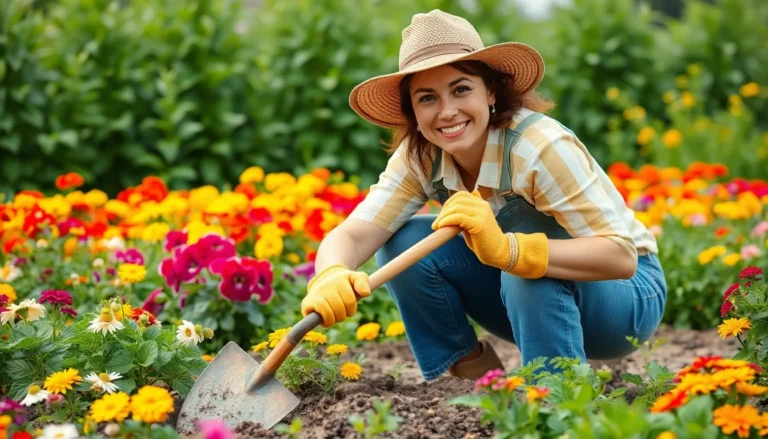Imagine stepping into a world bursting with color and fragrance, where every bloom tells a story. Flower gardening isn’t just a hobby; it’s a delightful escape from the daily grind. Whether it’s the cheerful daffodils or the elegant roses, each flower has the power to transform a mundane space into a vibrant oasis.
Getting Started With Flower Gardening
Flower gardening offers an exciting opportunity to create a colorful space filled with beauty and fragrance. Selecting suitable flowers and understanding climate considerations set the foundation for a thriving garden.
Choosing the Right Flowers
Selecting flowers involves considering factors such as color, bloom time, and growth habit. Daffodils thrive in spring, while roses may bloom throughout the summer. Annuals like marigolds provide vibrant color for one season, whereas perennials such as peonies return year after year. Researching native flowers also supports local ecosystems. Combining different flower types can create dynamic arrangements and extend seasonal interest in the garden.
Understanding Your Climate Zone
Understanding climate zones assists in flower selection, ensuring plants thrive in specific conditions. The USDA Plant Hardiness Zone Map divides regions based on average minimum temperatures. Gardeners in warmer zones, like Zone 10, can cultivate tropical plants while those in cooler zones, such as Zone 5, might focus on hardy varieties. It’s important to consider sun exposure, soil type, and moisture levels when choosing flowers that suit the local environment. Matching flowers to the climate zone promotes healthy growth and vibrant blooms.
Planning Your Flower Garden

Planning a flower garden involves careful consideration of layout and location. Both elements play vital roles in achieving a beautiful and thriving garden.
Designing the Layout
Designing the layout starts with determining the size and shape of the garden space. Gardeners can use straight lines for modern looks or curves for a more natural feel. Next, create sections for different flower types, incorporating height variations for visual interest. Consider placing taller flowers at the back of borders or in the center of circular designs. Additionally, using pathways improves accessibility and enhances aesthetics. Another factor includes grouping flowers with similar water and sunlight needs, which simplifies maintenance while maximizing plant health.
Selecting the Right Location
Selecting the right location is crucial for ensuring optimal flower growth. First, assess sunlight exposure, as most flowers thrive with at least six hours of direct sunlight daily. Additionally, evaluate soil quality, aiming for well-draining, nutrient-rich options. Soil tests can identify pH levels and nutrient content, helping in soil amendments if needed. Proximity to water sources facilitates easy irrigation, minimizing stress on plants. Wind protection can also enhance a garden’s success, especially in open areas. Choosing the perfect location contributes significantly to a flourishing flower garden.
Planting Techniques
Flower gardening thrives on the right techniques for successful planting. Understanding soil preparation and proper watering methods proves essential for vibrant blooms.
Preparing the Soil
Soil preparation sets the foundation for healthy plants. A gardener should test the soil pH, aiming for a range of 6 to 7. Adding compost enriches the soil, improving both structure and drainage. Incorporation of organic matter benefits nutrient availability for flowering plants. Tilling the area breaks up compacted soil, facilitating root growth and water infiltration. Loamy soil supports most flowering species, offering the best balance of sand, silt, and clay.
Watering and Fertilizing
Watering techniques significantly impact plant health. Deep watering encourages roots to grow deeper, coping with dry conditions more effectively. Choosing early morning for watering minimizes evaporation loss and fungal diseases. Fertilizing during the growing season supports blooming, with slow-release fertilizers delivering nutrients gradually. Liquid fertilizers can also provide a quick nutrient boost when needed. Keeping an eye on leaf color helps indicate nutrient deficiencies, allowing for timely adjustments.
Maintenance Tips for a Healthy Garden
Maintaining a flower garden involves regular care to ensure vibrant blooms and healthy plants. Attention to tasks like pruning and managing pests often yields remarkable results.
Pruning and Deadheading
Pruning involves cutting back overgrown plants to promote stronger growth. It’s important to remove dead or wilted flowers, known as deadheading, as it encourages further blooming. Maintaining proper pruning techniques not only shapes the plants but also helps improve air circulation, reducing the risk of disease. Specific tools like sharp, clean shears enhance effectiveness, minimizing damage to healthy parts. Regular attention to these tasks throughout the growing season contributes to a more vigorous garden.
Pest and Disease Management
Pest and disease management requires vigilance and proactive measures. Identifying common pests, such as aphids and slugs, facilitates early intervention. Natural remedies, including insecticidal soap and neem oil, often work effectively without harming beneficial insects. Frequent monitoring for signs of disease, like leaf spots or mold, allows for swift action. Implementing crop rotation and companion planting can also mitigate pest populations. Healthy plants are more resistant to both pests and diseases, making regular care vital for long-term success.
Harvesting and Enjoying Your Flowers
Harvesting flowers at the right time ensures maximum beauty and longevity. Observe flower maturity by checking color vibrancy and petal firmness. Cut flowers during the cooler parts of the day, ideally in the early morning or late afternoon. Using clean, sharp scissors or pruning shears helps prevent damage to the plants.
Enjoying freshly cut flowers adds liveliness to indoor spaces. Display blooms in clean vases filled with fresh water, and consider adding flower food to prolong their lifespan. Change the water every few days and trim stems to enhance water absorption. Mix different flower types, like daisies and tulips, for a dynamic bouquet.
Creating thoughtful arrangements enhances visual appeal. Group flowers with complementary colors and varying heights for an eye-catching design. Experiment with textures from foliage and other botanical elements to elevate arrangements.
Gifting flowers brings joy, making meaningful occasions memorable. Consider packaging blooms with eco-friendly materials for a charming presentation. Personalizing notes with heartfelt messages adds a special touch.
Maintaining a seasonal flower growth strategy provides continuous enjoyment. Deadheading spent blooms encourages further flowering, promoting a vibrant garden throughout the season. Additionally, consider preserving some flowers for long-lasting enjoyment. Air-drying or pressing flowers creates beautiful keepsakes or crafts.
Engaging with flowers cultivates a deeper appreciation for gardening. Seasonal blooms, such as sunflowers and peonies, celebrate the natural beauty of each stage of growth. Their colors and scents uplift spirits and enhance well-being, reinforcing the joy of flower gardening.
Conclusion
Embracing flower gardening opens up a world of beauty and tranquility. With the right planning and care, anyone can transform their space into a vibrant oasis. By selecting suitable flowers and understanding their needs, gardeners can create stunning displays that thrive throughout the seasons.
Regular maintenance and mindful practices ensure a flourishing garden that not only enhances outdoor spaces but also uplifts the spirit. The joy of harvesting and arranging blooms adds a personal touch to any home. Flower gardening is more than a hobby; it’s a rewarding journey that fosters a connection with nature and enriches everyday life.




